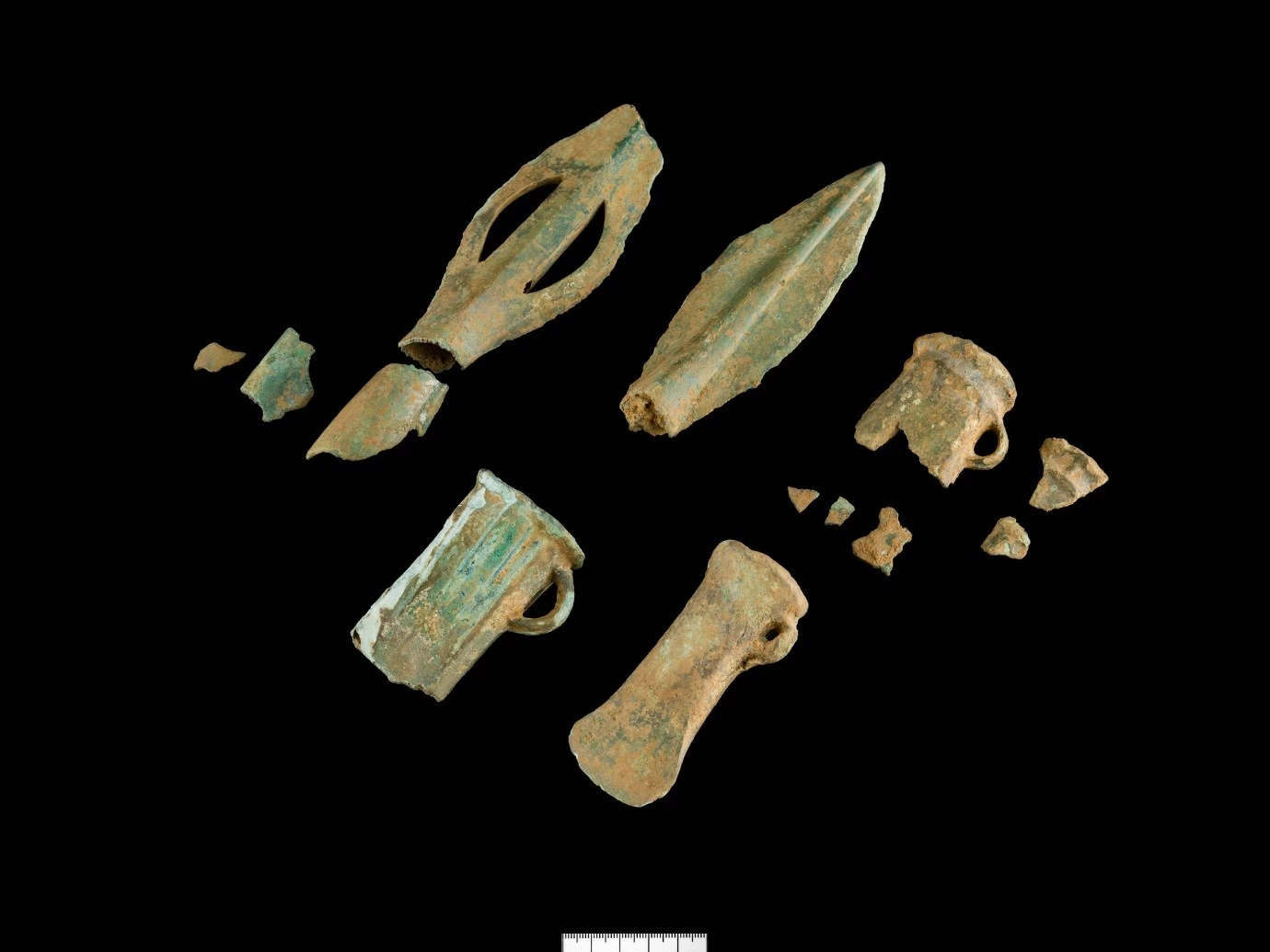Finding Bronze Age Treasure
, 7 June 2017
Archaeologists have made a significant Bronze Age discovery in the Torfaen area of south Wales, which will help people to understand communities living in Torfaen around 3,000 years ago.
A Bronze Age hoard was discovered by local metal detectorist, Gareth Wileman, in November 2014 while metal-detecting in the area of Trevethin, Torfaen. The hoard consists of five Bronze Age artefacts, including three socketed axes and two spearheads; this discovery was subsequently declared as treasure in 2016 by H.M. Coroner for Gwent.
The Bronze Age artefacts, which date back 3,000 years, were the first of their kind to be displayed in Pontypool Museum after being presented as part of the Torfaen Treasure Day on Friday, 7 April 2017.
The Rt. Hon Lord Paul Murphy of Torfaen, President of the Torfaen Museum Trust, opened the event, followed by guest speakers from Amgueddfa Cymru – National Museum Wales and local MP, Mr Nick Thomas-Symonds.
The Bronze Age hoard has sparked media interest and you can read articles from the BBC, ITV and South Wales Argus to name a few.
We sent our journalism students who were on a two week work placement with the Saving Treasures; Telling Stories Project to Pontypool Museum to interview the finder; Gareth, and find out how he feels about his discovery. Metal detectorist talking about his Bronze Age treasure discovery
He said:
“I’m glad they’re being displayed somewhere smaller like Pontypool, especially as it provides new information on what life could have been like here thousands of years ago. Everyone knows about the mining times and that’s what Pontypool is known for, the Big Pit.
“Obviously this will now show that 3,000 years ago there was more happening up here than what people thought, and I think now Pontypool could be known for having Bronze Age artefacts and an older history.”
Gareth started metal detecting after coming across a YouTube video, he said:
“I had done a bit of metal detecting when I was a lot younger. I had found small cheap things like 20 pence when I used to do it in the garden.
“I started reading more about metal detecting and metal detectors. Then I went and bought one and started going out with it.”
His first find was a 1927 silver Florian coin, which inspired him to pursue his hobby. One aspect Gareth was keen to encourage was the need to report your findings as soon as possible to the museum or your closest Finds Liaison Officer. He wants others who take up metal-detecting to let the museum know if they find something as it could have historical importance.
“Anything you find then you should just let the museum know otherwise it could end up anywhere. The worst thing about it is when people find stuff that others would love to see, but it ends up being sold or put into a private collection.
“Not necessarily everything is interesting, but it’s good to know that it has been found and where it was found and then museums can take it from there.”
“The Trevethin hoard is a significant Bronze Age discovery in this area of Wales, where little was previously known. The quick reporting to the Portable Antiquities Scheme in Wales by Gareth enabled us to carefully excavate the find-spot and ensured that we can now better understand these communities living in the Torfaen area 3,000 years ago.” -Mark Lodwick Co-ordinator of the Portable Antiquities Scheme for Wales (PAS Cymru)
The hoard is being acquired by Pontypool Museum with grant funding from the Saving Treasures; Telling Stories Project. This project, funded via the Collecting Cultures programme of the Heritage Lottery Fund, is acquiring archaeological objects discovered by members of the public for public museum collections across Wales. The project is also encouraging communities to engage with their pasts and portable archaeological heritage, by funding a programme of community archaeology projects led by staff in museums throughout Wales.

